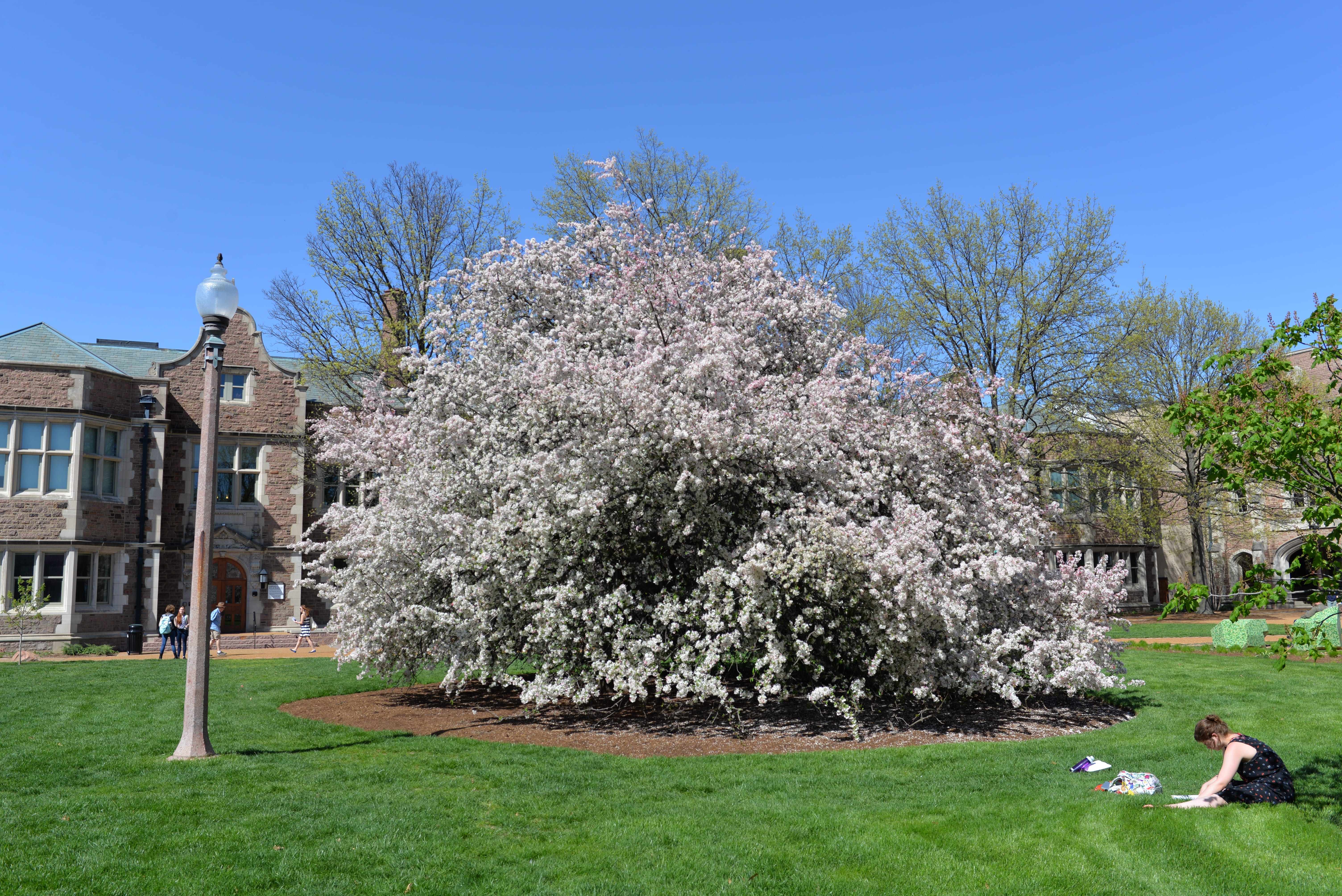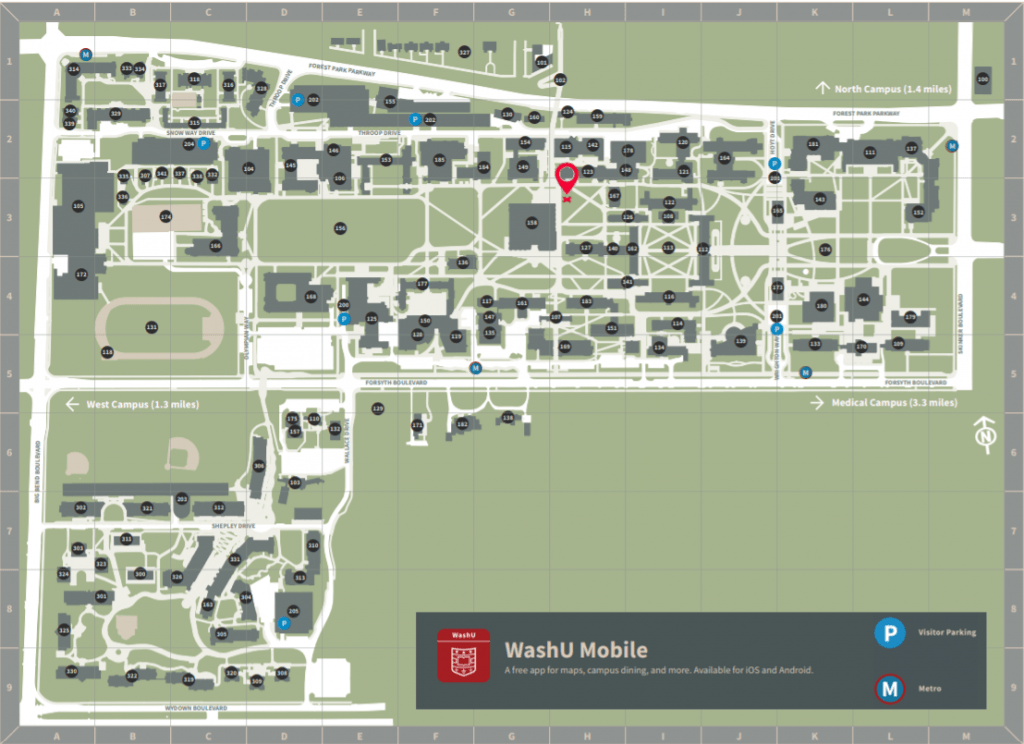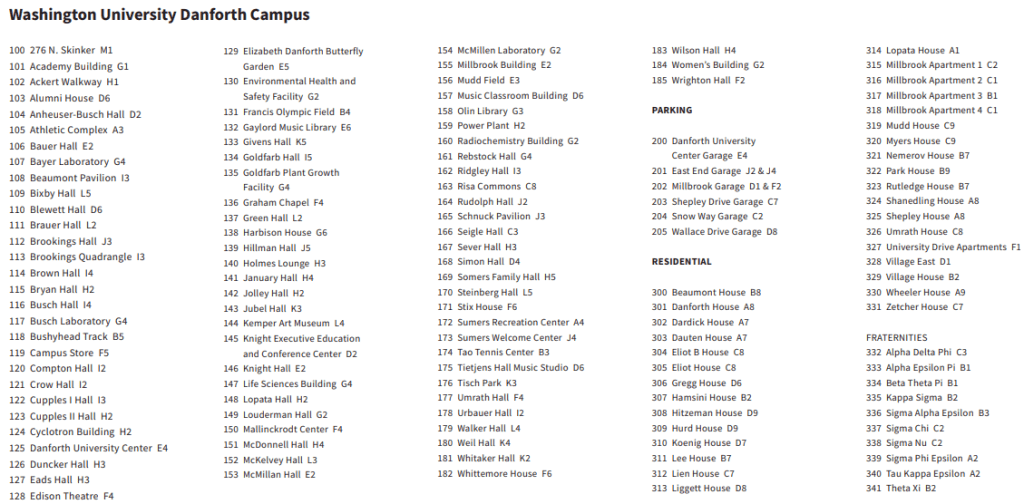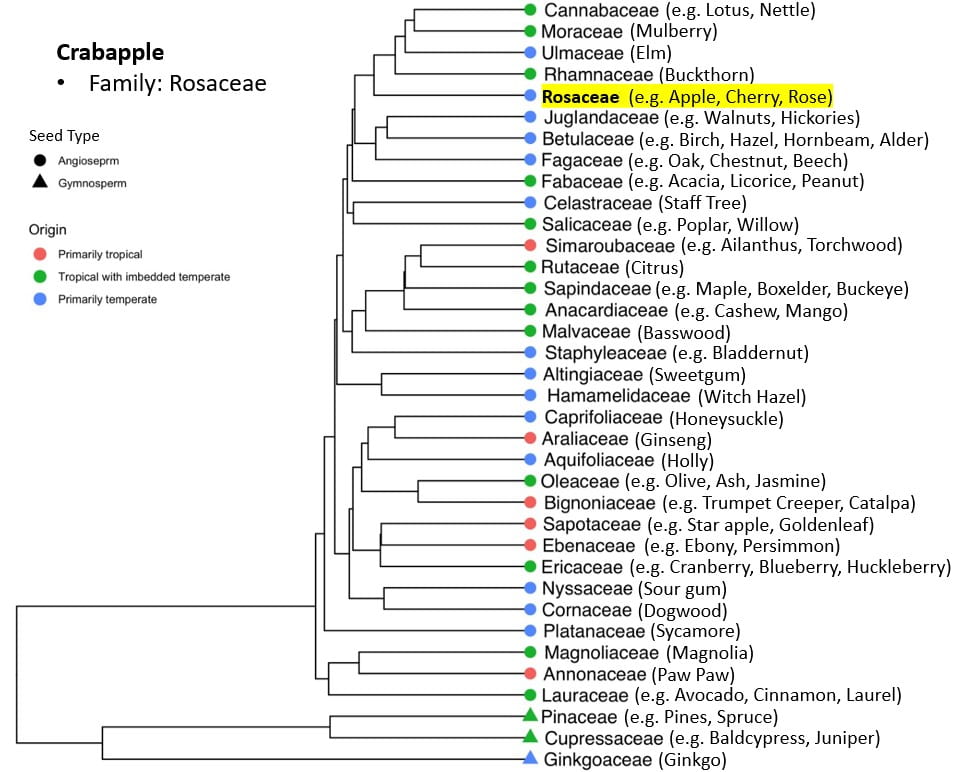Japanese Flowering Crabapple
Arbor Walk #11, Treekeeper ID #1607

This small flowering tree belongs to a family of trees that are popular for their profuse spring flowers. This tree also produces its namesake crabapples, which are edible except for the seed, yet very small. Arbor Walk #11 has a dome-like shape and students often study underneath the tree’s canopy in hotter months.
| Common Name | Japanese Flowering Crabapple |
|---|---|
| Latin Name | Malus floribunda |
| Indigenous Name(s) | |
| Cultivar/Variety | |
| Commercial Name |
Global Distribution
coming soon


GPS Coordinates
N/A
Percent Concrete
N/A
Distance to Buildings
| Year | Close Building #1 | Close Building #2 | Close Building #3 |
|---|---|---|---|
| 2020 | Olin, 17.71 m | Cupples II, 29.99 m | Sever Hall, 53.35 m |
Distance to Other Species
| Year | Close Species #1 | Close Species # 2 | Close Species # 3 |
|---|---|---|---|
| 2020 | Redbud, 9.83 m | Redbud, 10.13 m | Ohio Buckeye, 12.64 m |
Standard Measurements
| Year | Height (m) | DBH (cm) | Caliper (m) | Crown Diameter N-S (m) | Crown Diameter E-W (m) | Average Crown Diameter (m) |
|---|---|---|---|---|---|---|
| 2020 | 10.0986 | 43.2 | N/A | 13.21 | 13.18 | 13.195 |
| 2023 | 11.6 | 45 | N/A | 13.53 | 11.5 | 12.515 |
| 2024 | 11.75 | 46.25 | N/A | 14.66 | 13.12 | 13.89 |
Nests and Pests
| Year | Description |
|---|---|
| 2020 | Many open wounds- both new and old- have been widened+deepend by insects One active insect nest on the underside of a branch, with webbing and maggots inside Many old webworm nests Large blanket of grey/white lichen and fungus inside an old hollow 1 large canker 1 gash in the bark made by humans or animals Where the lower branches reach the ground, the bark has been chewed away Multiple varieties of lichen and algae Several ‘wet’ bacterial stains on the bark On many areas with exposed wood, there are small holes (<1mm) from boring insects Some deeper holes were also observed |
Leaf Identification
The leaves of the Japanese Flowering Crabapple are glossy and dark green. The leaf shape is ovate to elliptic, with arcuate veins and serrated margins. The petiole (leafstalk) and midvein are very finely pubescent (hairy). The leaves change color to yellow in the fall.
Twig and Bud Identification
The twig of the Japanese Flowering Crabapple is deep red, with white lenticels (pores) dotting its smooth surface. The twig is very subtly zig zag. The buds are red and scaled.
Bark Identification
The bark of the Japanese Flowering Dogwood is pale gray with streaks of tan and dark gray. The bark has vertical scales.
Fruit Identification
The flowers are small, about 1/3″in diameter. They are drupes (seed covered by a fleshy mesocarp and exocarp/peel)
Flower Identification
The flowers of the Japanese Flowering Crabapple are white-pink. They have many petals and a cluster of long white stamens at their center. The flowers have a pleasant odor, and bloom in the spring.












